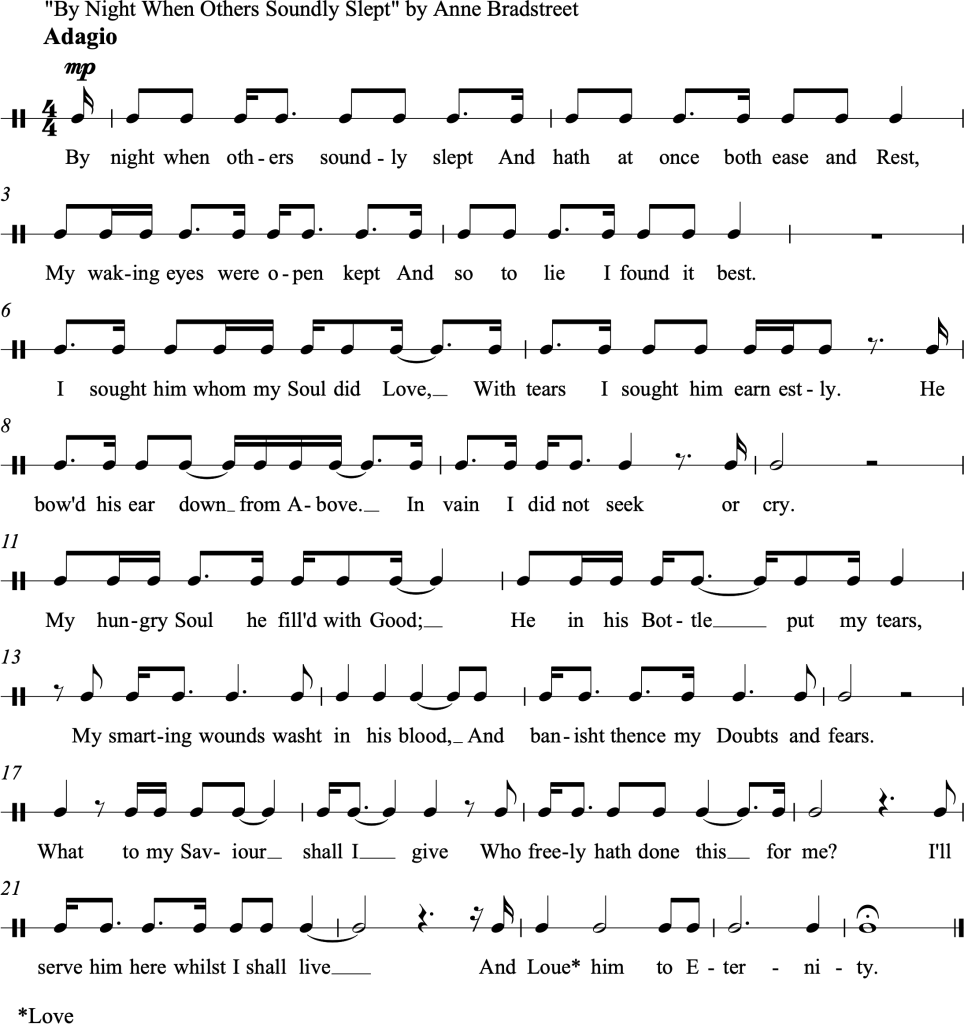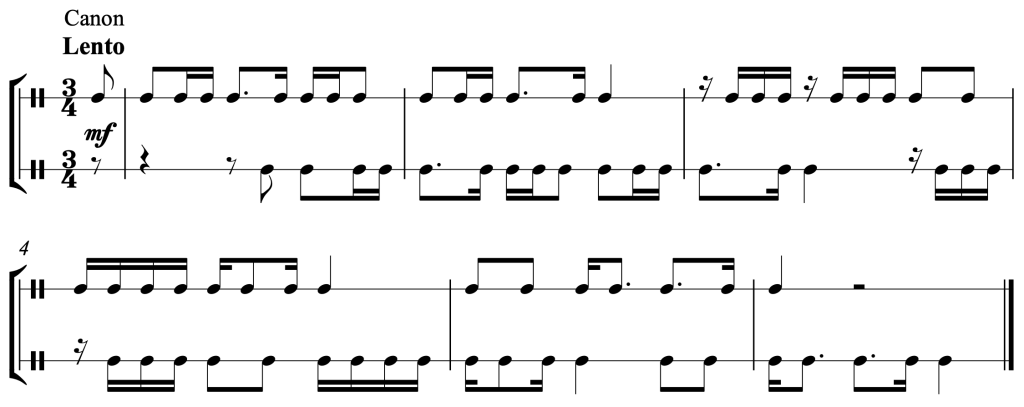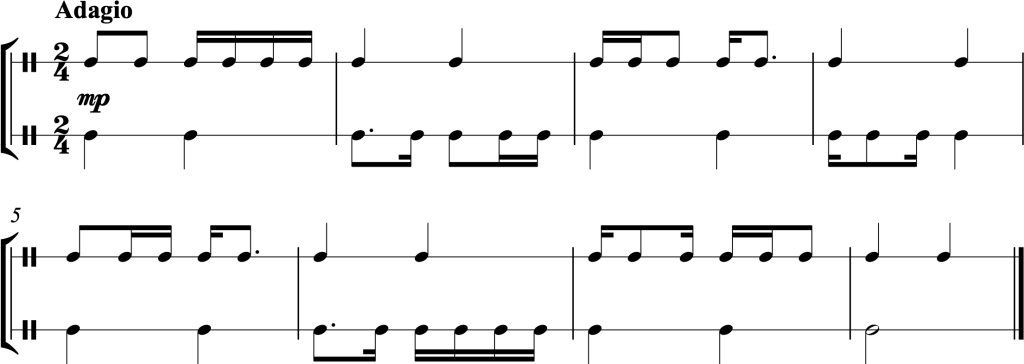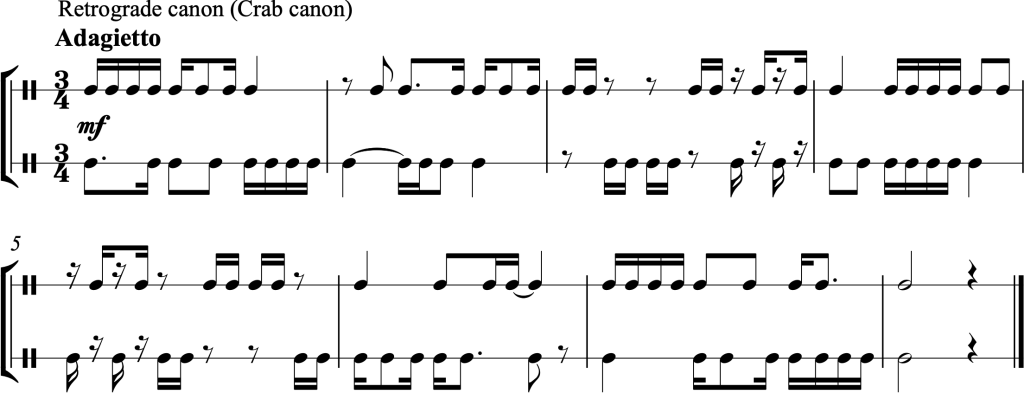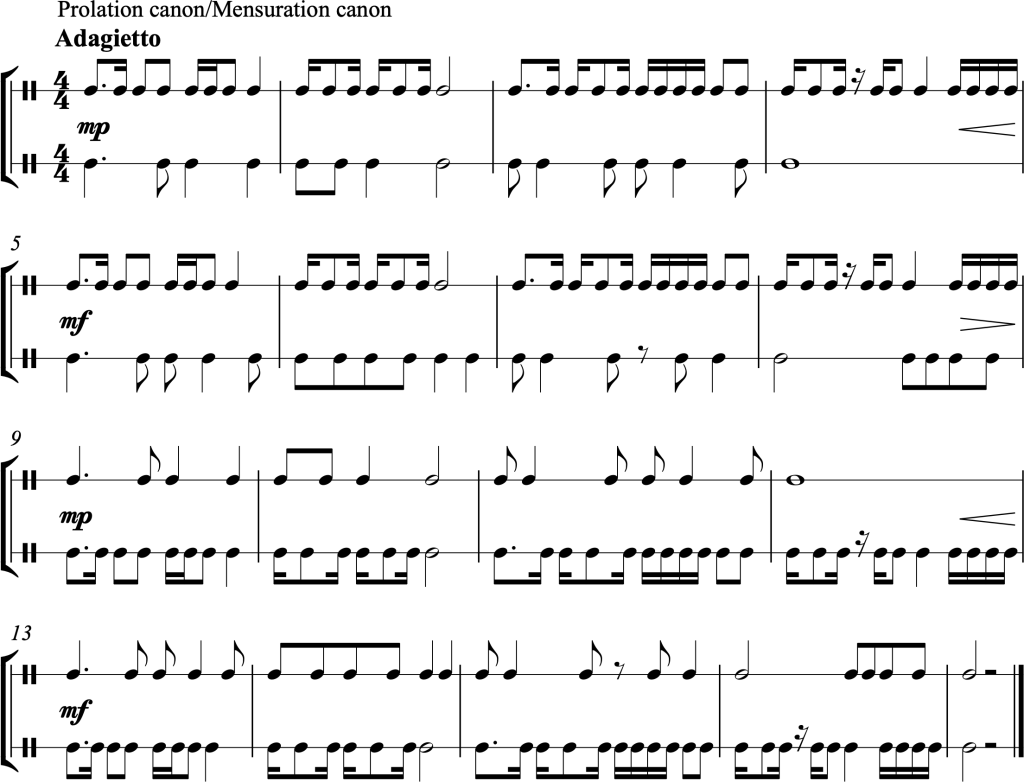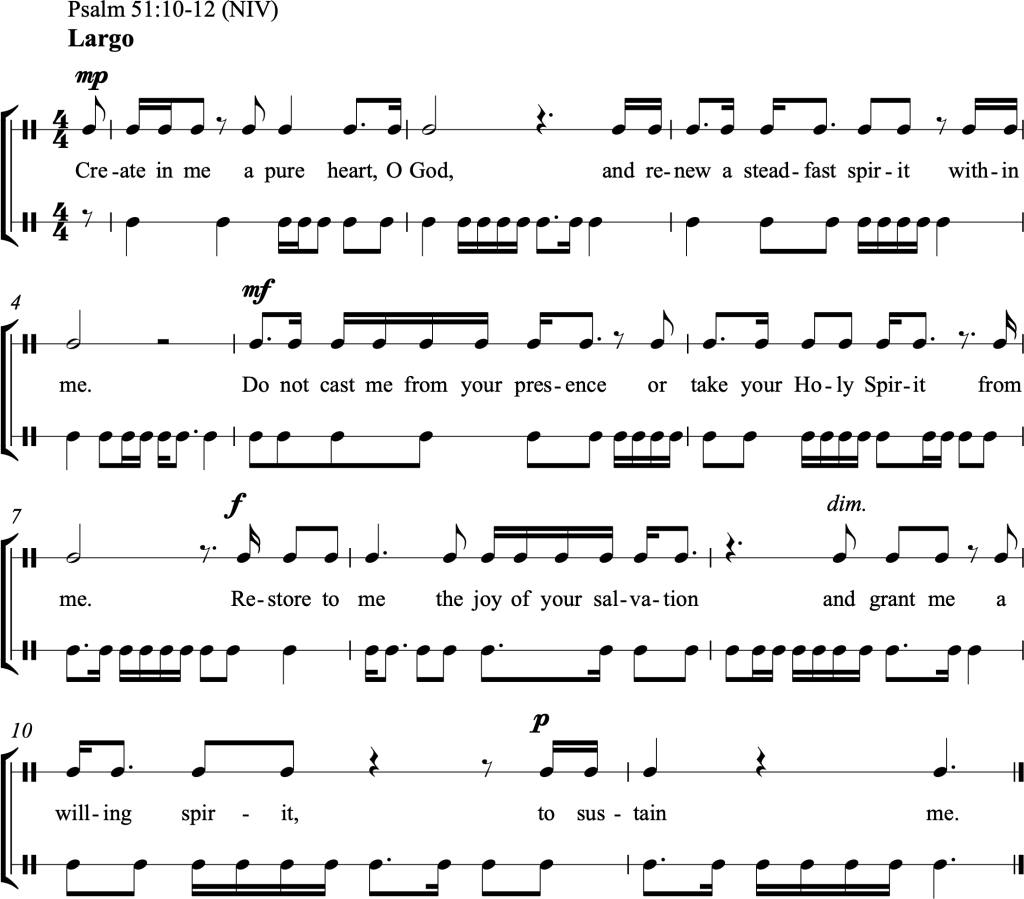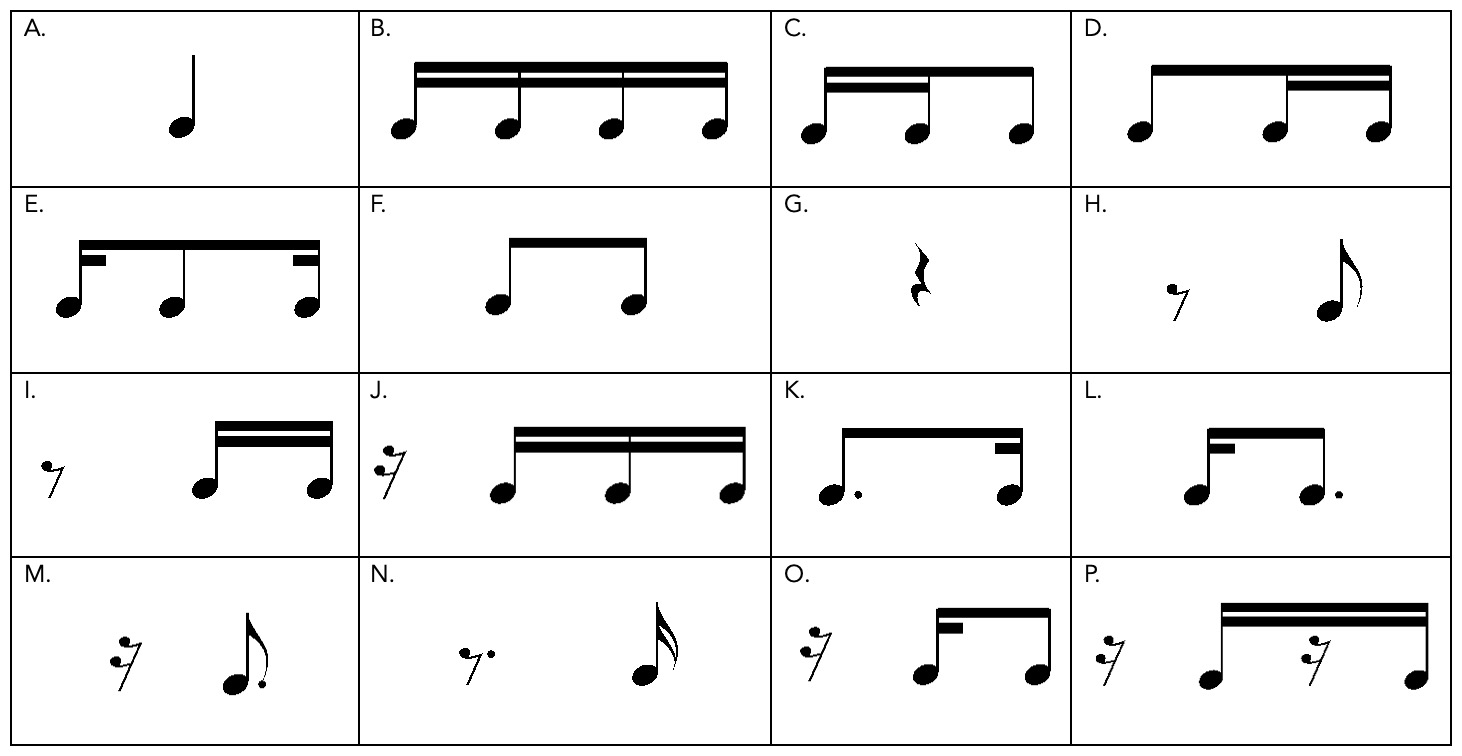Chapter 6: Simple Meter—dotted eighth notes
About This Chapter
About This Chapter: We’ve already seen dotted half notes and dotted quarter notes. In this chapter, we’ll take what we know about dots and apply it to eighth notes. Remember that a dot means that we add half of the note’s value to itself. So for a dotted eighth note, we have to hold it for one eighth note plus half that value (a sixteenth note). Check out the figure below. Measures 1 and 2 should sound identical, as should measures 3 and 4.
Section A—Dotted eighth notes on the beat (“1___a”)
Practice
Practice A:
 Practice by performing along with this audio file, which features a metronome click and the notated rhythm. You will hear two measures of wood block to establish the tempo before the exercise begins.
Practice by performing along with this audio file, which features a metronome click and the notated rhythm. You will hear two measures of wood block to establish the tempo before the exercise begins.
Next, try performing along with this audio file, which features the notated rhythm but no metronome click. You will hear two measures of wood block to establish the tempo before the exercise begins.
1.
2.
3.
4.
5.
6.
7.
8.
9.
10.
Section B—Dotted eighth notes off the beat (“1 e___”)
Practice
Practice B:
 Practice by performing along with this audio file, which features a metronome click and the notated rhythm. You will hear one measure of wood block to establish the tempo before the exercise begins.
Practice by performing along with this audio file, which features a metronome click and the notated rhythm. You will hear one measure of wood block to establish the tempo before the exercise begins.
Next, try performing along with this audio file, which features the notated rhythm but no metronome click. You will hear one measure of wood block to establish the tempo before the exercise begins.
11.
12.
13.
14.
15.
16.
17.
18.
19.
20.
21.
22.
23.
Section C—Two-part rhythms featuring dotted eighth notes
Practice
24.
25.
26.
27.
28.
29.
30.
31.
32.
33.
Rhythmic Cells
- For general suggestions on how to use these rhythmic cells, see Appendix: How to Use Rhythmic Cells.
Rhythm in Context
Rhythm in Context example coming soon!
Citations
Poem:
- Anne Bradstreet (1612–1672), “By Night When Others Soundly Slept,” public domain. From The Tenth Muse, Lately Sprung Up in America, published 1650.
Psalm:
- Scriptures marked “NIV” taken from the Holy Bible, New International VersionTM, NIVTM
- Copyright © 1973, 1978, 1984, 2011 by Biblica, Inc. Used with permission. All rights reserved worldwide. The “New International Version” is a trademark registered in the European Union Intellectual Property Office (EUIPO) and United States Patent and Trademark Office by Biblica, Inc. The “NIV”, “Biblica”, “International Bible Society” and the Biblica Logo are trademarks registered in the United States Patent and Trademark Office by Biblica, Inc. Used with permission.
Rhythm in Context:

























